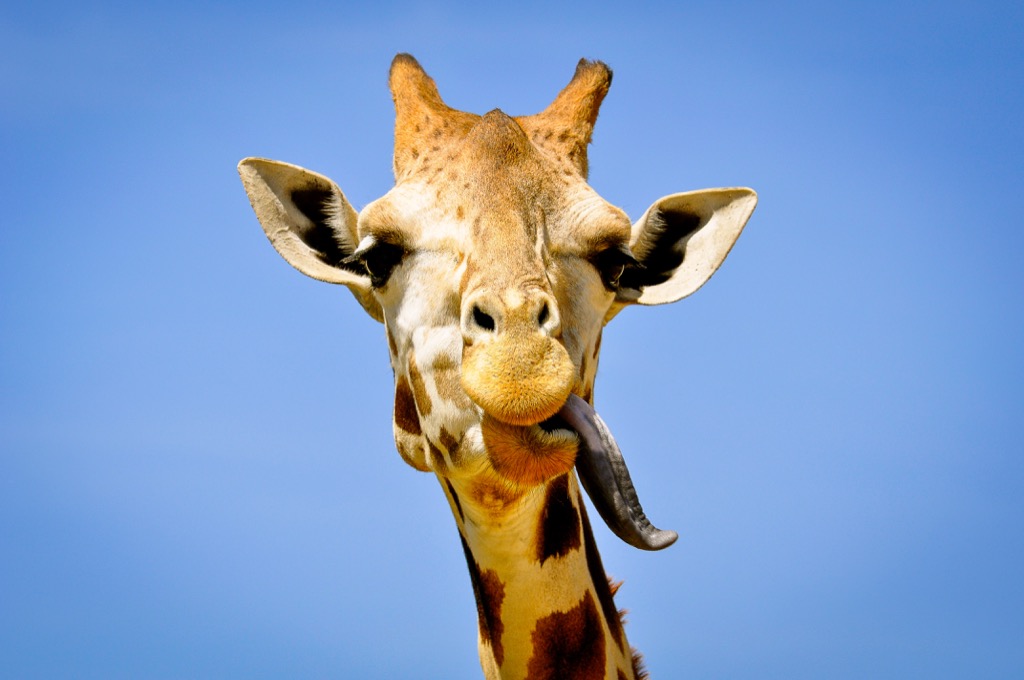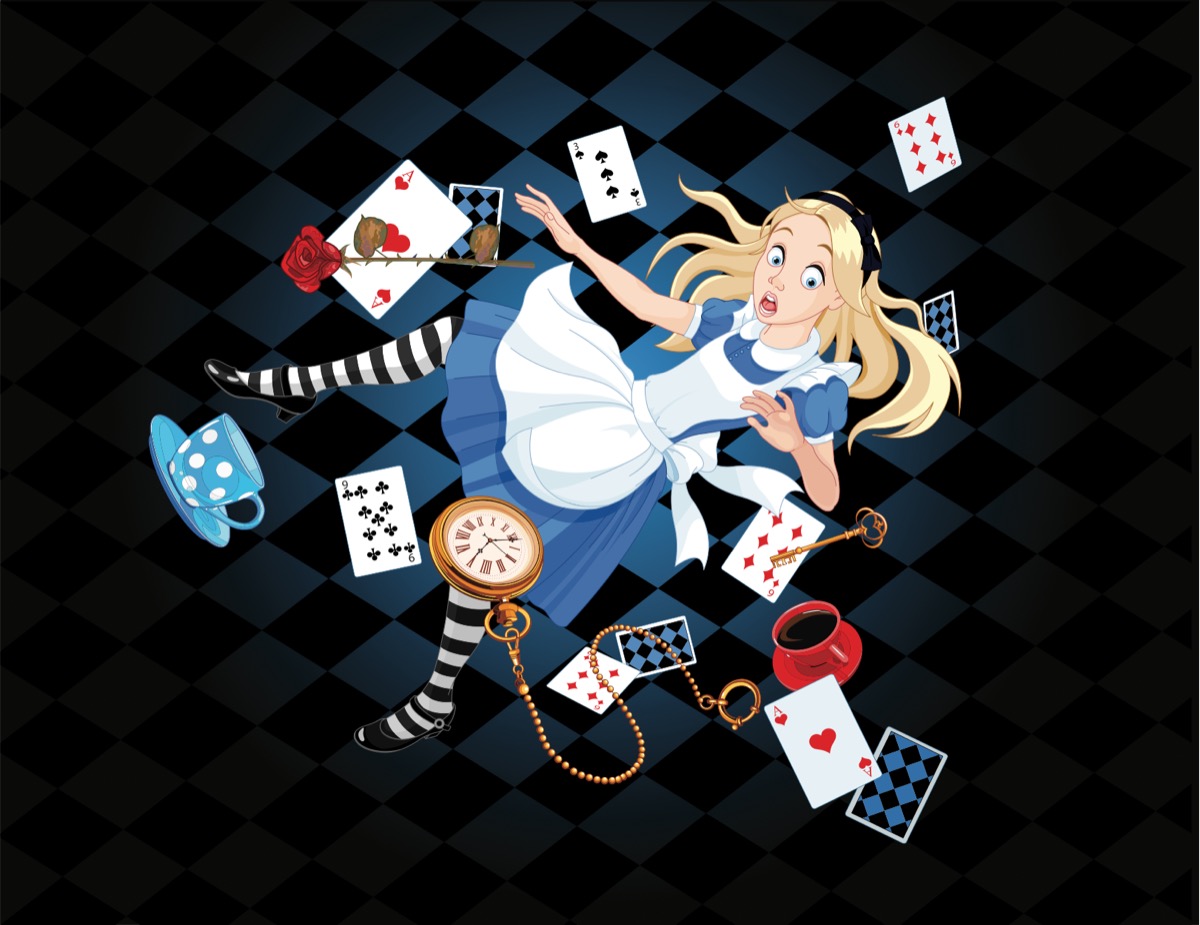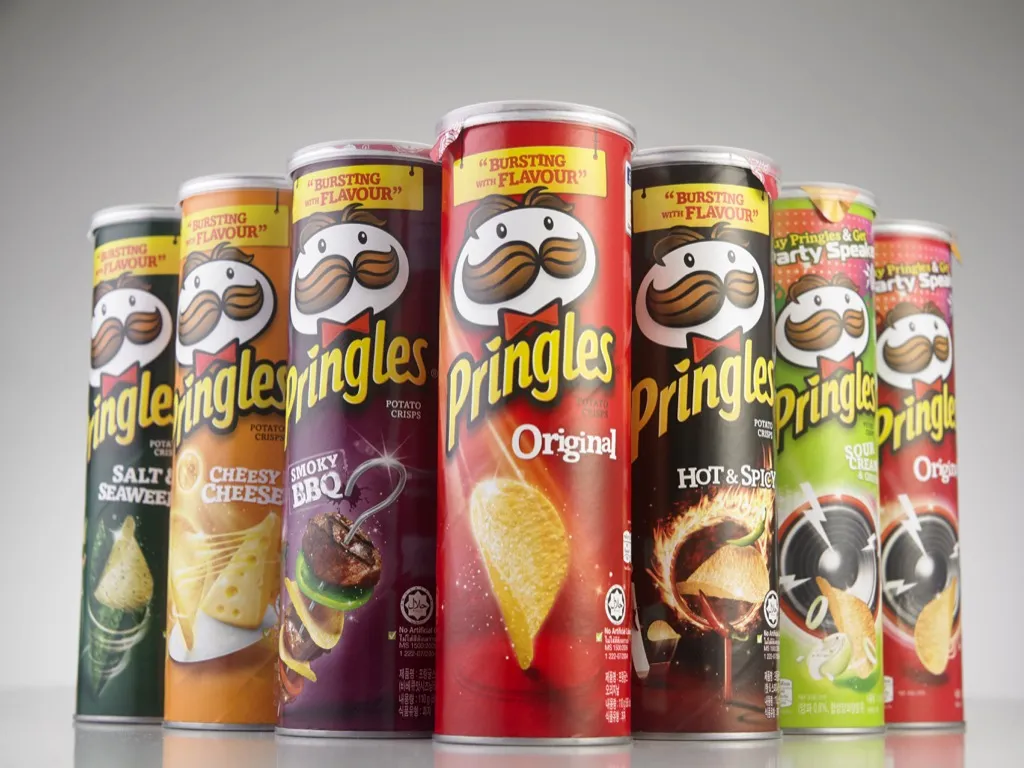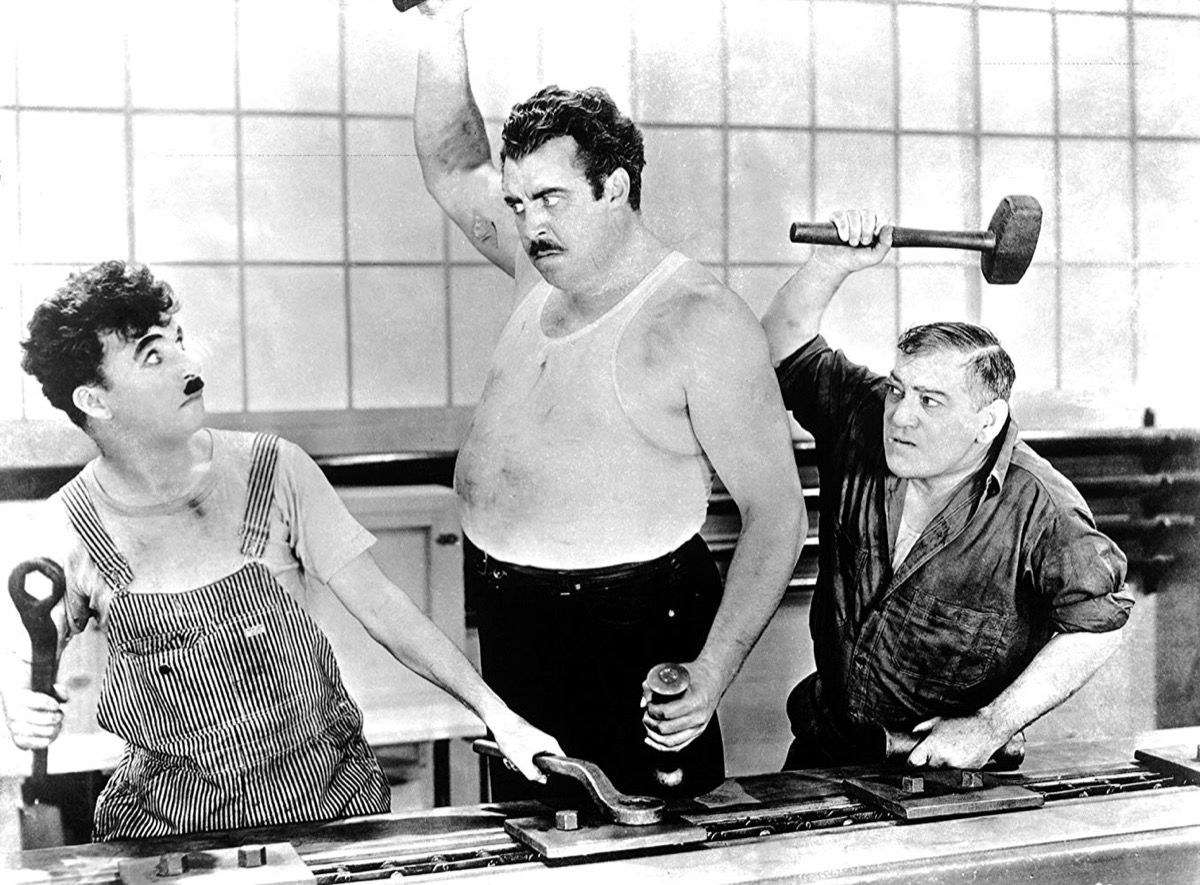50 Absurd Facts That Will Make You Question Everything

There’s nothing like a good fun fact to restore your sense of wonder about the world around you. Maybe you’re at dinner and your kid stuns you with an awesome piece of trivia they learned from their science textbook. Or maybe you’re watching Animal Planet and an interesting statistic jumps out at you. However they happen, these are the moments that spark our curiosity and keep our minds fresh. Plus, having a few fascinating facts in your back pocket means you’ll never be stuck in an awkward conversation again.
To help you freshen up your arsenal of fun facts, we’ve rounded up some truly inspiring bits of information that’ll blow your mind. From how much your blood weighs to ladybugs’ bizarre defense mechanism, these absurd facts are sure to pique your interest! And if you can’t get enough fascinating factoids, check out 50 Fun Facts About the World That Will Put a Smile on Your Face.
1
You typically only breathe out of one nostril at a time.

You might think that your nostrils share the workload when it comes to taking in oxygen. And while they do, it’s not quite in the way that you might expect. Instead of both taking in the same amount of air when you breathe, you actually inhale most of your oxygen through one nostril at a time. Every few hours, the active nostril will take a break and the other one will take over until they ultimately switch back again. Try it for yourself!
2
“Vegetables” don’t really exist.

Professional chefs and home cooks may use the word “vegetable” to describe everything from asparagus and broccoli to zucchini and yams. But it turns out the term has no scientific value. When the BBC asked botanist Wolfgang Stuppy of the Royal Botanic Gardens if vegetables really exist, he answered, “No, not botanically… the term vegetable doesn’t exist in botanical terminology.” And for more wild information about the world you thought you knew, check out 50 Weird But Wonderful Facts That Will Leave You Totally Amazed.
3
More people drown in fresh water than in salt water.

Did you know that the vast majority of drownings occur in fresh water? According to ThoughtCo, a staggering 90 percent of drownings take place in swimming pools, bathtubs, and rivers—not only because of circumstances, but also because of the way the different types of water affect the human body in potentially fatal situations.
4
Your brain uses up around 20 percent of your body’s blood and oxygen.

The human brain is responsible for countless tasks and is always busy keeping our internal systems running. In order to remain so vitally productive, the brain uses 20 percent of both the oxygen and the blood in your body, according to Healthline. And for more information about your brain, body, and more, check out 50 Science-Backed Health Facts That Will Blow Your Mind.
5
Ravens’ moods are affected by others.

It’s a well-known fact that ravens are wildly intelligent creatures. But 2019 research published in the journal Proceedings of the National Academy of Sciences discovered that the birds are also very in tune with the feelings of the creatures around them. This empathetic trait had previously only been observed in primates.
6
Giraffes hum to each other at night to make sure their herd stays together.

If you’re not already completely charmed by giraffes’ incredibly long necks and stylish spots, then there’s another fact about these super tall creatures that might win you over. Although scientists had previously believed that the animals were either completely silent or made noises that humans were unable to hear, they recently learned that giraffes can hum—and humans can hear it, too.
In 2015, researchers from the University of Vienna gathered 947 hours of giraffe noises over an eight-year period at three zoos and they discovered that the animals produced a humming sound at night. The scientists hypothesize that the animals do this to help keep their herd together when their vision is impaired in the low light. And if you can’t get enough animal facts, here are 75 Animal Facts That Will Change the Way You View the Animal Kingdom.
7
Figs aren’t considered vegan because they have dead wasps inside.

Anyone who sticks to a strictly plant-based diet will want to remove figs from their repertoire. While the figs themselves are fruit, they often include bugs. Vegan Life explains that a female “wasp will enter the fig, passing into a part of the plant known as the calimyrna” while trying to lay her eggs. “Eventually, she dies… and is broken down by a protein-digesting enzyme inside the fig.”
8
We are born with only two innate fears.

While it might seem like you’ve been afraid of snakes and spiders since you were born, that’s not totally true. According to CNN, scientists have found that humans have just two innate fears: the fear of falling and the fear of loud sounds. The rest of your phobias are learned over time.
9
Your blood makes up about 8 percent of your body weight.

The human body contains everything from muscles and bones to organs and bacteria. But when it comes to your overall weight, you’d be silly not to consider your blood. Turns out, it makes up around 8 percent of the number you see on the scale, according to the American Society of Hematology.
10
David Bowie launched an internet provider in the late 1990s.

David Bowie was a legendary songwriter and an iconic performer. And in the late 1990s, he was also an internet provider. He launched BowieNet in 1998 and the service remained available until the early 2000s. For $19.95 a month, users would receive an email address ([email protected]), 5MB of online storage meant for a personal web page, exclusive audio and video of Bowie, access to chat rooms (where Bowie would supposedly pop up on occasion), and even multiplayer games. Sounds far cooler than AOL! And for more facts about celebrities that’ll leave you speechless, check out 50 Crazy Celebrity Facts You Won’t Believe Are True.
11
You have a 1 in 1,461 chance of being born on leap day.

Are you a leap day baby? We’d put our money on no. Due to the fact that Feb. 29 only comes around once every four years—as it did in 2020—having this birthday is incredibly rare. In fact, a person has a 1 in 1,461 chance of being born on that day. According to Vox, that’s because there are 1,460 days in four years, plus one for the leap year, totaling 1,461.
12
The longest one-syllable words in the English language all start with the letter “s.”

A monosyllabic word has just one syllable. And while plenty of monosyllabic words exist, the longest ones all happen to start with the letter “s,” according to Guinness World Records. At 10 letters, “scraunched” and “strengthed” are the longest monosyllabic words in the English language. “Screeched,” “scrounged,” “squelched,” “straights,” and “strengths” come in second place with nine letters each.
13
Ancient Greeks and Romans didn’t have a number for zero.

If you learned Roman numerals in school, then you might’ve realized you were never taught the number for zero—and that’s because there isn’t one. While the ancient Romans (and Greeks) were fully aware of the concept of having nothing, they skipped over zero when it came to numbers. In fact, Aristotle himself is said to have dismissed the number because you couldn’t divide it and get a reasonable answer, according to The Guardian.
14
Caesar salad was invented in Mexico by an Italian-American man.

Caesar salad sounds like an item that was inspired by Julius Caesar in Rome. But the truth is that it was named after the man who invented it in 1924—Italian-American restaurateur Caesar Cardini—not its place of origin, which was actually Tijuana, Mexico. According to Food & Wine, Cardini moved to the city (which is close to the California border) to escape the confines of prohibition. Cardini developed the simple salad during the Fourth of July rush in 1924 with the only ingredients he had left.
15
Miss Piggy was originally named Piggy Lee.

Miss Piggy has been a fan favorite ever since she made her debut on The Muppet Show in 1976. But it turns out that before she was introduced to the world, she went by another name. In 2014, Time reported that a 40-year-old note and a pair of photos from the character’s creator, Jim Henson, showed that Miss Piggy’s name was initially “Piggy Lee.” Although we know that she famously fell for Kermit the Frog, in the photos, she’s seen with a character named Hamilton Pigg. Poor Kermie!
16
Nobody knows how to open the entire vault at Fort Knox.

Kentucky’s Fort Knox is one of the most secure places in the U.S., due to the fact that it’s home to more than 147.3 million ounces of gold bullion, according to the U.S. Mint. During World War II, it even stored the Declaration of Independence, the Constitution, and the Bill of Rights. So obviously, there are strict precautions when it comes to access. For instance, there are very few people who are aware of the actual structure of the facility, and there’s not one single person who knows all of the procedures to open the vault entirely.
17
Squirrels cause most power outages in the U.S.

The American Public Power Association (APPA) says that squirrels are the most frequent cause of power outages in the U.S. The APPA even developed a data tracker called “The Squirrel Index” that analyzes the patterns and timing of squirrels’ impact on electrical power systems. Turns out, the peak times of the year for squirrel attacks are from May to June and October to November.
Typically, the squirrels cause problems by tunneling, chewing through electrical insulation, or becoming a current path between electrical conductors. “Frankly, the number one threat experienced to date by the U.S. electrical grid is squirrels,” said John C. Inglis, the former deputy director of the National Security Agency, in 2015.
18
You can tell the temperature by counting a cricket’s chirps.

If you’re not sure what the temperature is on hot summer day, just listen to the crickets. According to the Library of Congress, the musical creatures adjust their signature sounds according to the temperature, which means that if you count how many times a cricket chirps in 15 seconds and then add 37, you’ll get a number that is a pretty close approximation of the current temperature in degrees Fahrenheit.
19
Children of identical twins are genetically siblings, not cousins.

Cousins whose parents are identical twins share 25 percent of their DNA, instead of the usual 12.5 percent. While full-siblings share 50 percent of their DNA, half-siblings share 25 percent. That’s why, though children of identical twins are legally cousins, they are genetically the equivalent of half-siblings.
20
The Goodyear Blimp is the official bird of Redondo Beach, California.

The Goodyear Blimp is surely iconic, but it’s not exactly a living, breathing creature. Still, that didn’t stop Redondo Beach—a coastal city situated near the Goodyear Blimp’s home airport in Carson, California—from passing a resolution in 1983 to make the blimp its official bird.
21
There’s an entire holiday dedicated to what would happen if cats and dogs had opposable thumbs.

Have you ever wondered what your pet would be capable of if they had more practical paws? You can spend 24 hours thinking about just that on Mar. 3, which is “What If Cats and Dogs Had Opposable Thumbs Day.” Days of the Year asks you to “imagine a world where our favorite furry companions had thumbs. Opposable ones. Thumbs that allowed them to open their own tins of food, easily steal your possessions, and generally make them more trouble than they already are. What kind of world would that be?” We can definitely see the pros and cons.
22
Costco sells enough toilet paper per year to wrap around the world 1,200 times.

Every Costco lover knows that the big-box retailer is the ideal place to load up on everything from dog food and paper towels to socks and margarita mix. But according to CNBC, toilet paper is the store’s crown jewel: Costco sells about one billion rolls of toilet paper a year. That’s enough to wrap around the planet 1,200 times! (And we imagine that number is even bigger in 2020 especially.)
23
Cruise ships have their own morgues.

When travelers take cruises, they’re focused on the sunshine and the seawater. But those who run the ship have to consider the practical side of being out on the ocean for days at a time, and that includes what happens when someone passes away onboard. In order to deal with this unfortunate reality, most cruise ships have their own morgue that can accommodate multiple bodies.
24
Nomophobia is the fear of not having a mobile phone.

People are increasingly reliant on their devices these days, but for some, the attachment can develop into a serious issue. Those with nomophobia—an abbreviation of “no-mobile-phone phobia”—have a fear of not having their phone on them. They get equally freaked out when their battery dies or when there’s no network coverage available. One 2019 study by U.K. firm YouGov found that 34 percent of men and 52 percent of women currently deal with some form of the condition.
25
Ladybugs defend themselves by bleeding from their knees.

Ladybugs are seemingly sweet little creatures, but they also have a rather nasty way of defending themselves. When threatened, they release a foul-smelling chemical from their knees that has the ability to repulse predators. The substance, which is a hemolymph made up of a mix of alkaloids, can also ooze from their abdomens, according to the San Diego Zoo.
Fortunately, ladybugs have another defense mechanism, too: their color. “Predators learn that color combinations of bright oranges, reds, and blacks can mean an unappetizing taste, and they avoid eating the ladybugs,” the experts at the San Diego Zoo note.
26
The tiniest snail ever discovered could fit through a needle’s eye 10 times.

Snails are known for their impressive shells and slimy trails, but the Angustopila dominikae snail has also made headlines for being incredibly tiny. These itty-bitty creatures, which were discovered in 2014, are just 0.03 inches (or 0.86 millimeters) tall. That means that 10 of them could fit in the eye of a needle at one time!
27
Bamboo grows so fast, it’s measured in miles per hour.

Along with being strong and flexible, bamboo can be grown as a decorative plant or a practical crop. And bamboo is also a fabulously renewable resource. In fact, it’s the fastest growing plant on the planet, capable of shooting up 35 inches each day at a rate of 0.00002 miles per hour, according to Guinness World Records.
28
The Last Supper originally showed Jesus’ feet, but they were cut off to make a doorway.

Leonardo Da Vinci’s painting of the last supper is one of the most famous works of art in the world. It also used to include the central figure’s feet, but they were cut off when a door was installed in the wall beneath the fresco in 1652.
29
Alice in Wonderland syndrome is a condition that makes people feel larger or smaller than they actually are.

Anyone who knows the story of Alice in Wonderland is aware of the magical moments when the central character shrinks and grows in size. And while those with the rare Alice in Wonderland syndrome don’t actually shape-shift, they do have temporary episodes that make them feel larger or smaller. The spans of distorted perception can also make it seem like things around them are moving further away or closer.
30
The world’s smallest McDonald’s was designed for bees.

Unfortunately for hungry humans, there are no Big Macs or McNuggets available at the smallest McDonald’s restaurant in the world. For bees, though, there is plenty of honey. The mini eating establishment was built in Sweden as part of the company’s efforts to help restore the bee population. The hive—or rather, McHive—can not only house thousands of bees, but it’s also shaped like a smaller version of the fast food joint—tiny golden arches and all.
31
When there’s a double rainbow, the second rainbow mirrors the primary one.

It’s always exciting to spot a rainbow—but it’s even more thrilling to spot a double rainbow. Frankly, you may have been so captivated by the stunning occurrence that you failed to notice a wonderfully delightful detail: The second arch displays its colors in the opposite order of the primary rainbow!
32
“Kangaroo words” are words that contain their own synonyms.

A kangaroo word sounds like something that’s spoken in Australia, but it’s actually a word that happens to contain its own synonym, with the letters to spell it in the correct order. According to Dictionary.com, examples include the words “chocolate” (which includes the synonym “cocoa”), “masculine” (“male”), “blossom” (“bloom”), “chicken” (“hen”), “rambunctious” (“raucous”), and “deceased” (“dead”).
33
The longest feather boa was nearly four times the height of the Empire State Building.

Feather boas are usually long enough to wrap around a person’s shoulders. But during 2019’s Pride celebration in New York City, Madame Tussauds New York and Ripley’s Believe It or Not! Times Square set a Guinness World Record for the longest feather boa ever, stretching 1.2 miles. At that length, the boa was nearly four times the height of the Empire State Building! Drag queen Shangela of RuPaul’s Drag Race and A Star Is Born emceed the unveiling event.
34
Astronauts can now bake cookies in space.

Astronauts have to nosh on space-safe versions of the foods we eat on Earth. However, in fall 2019, the International Space Station tested out a space oven that will allow those aboard to bake cookies. Seriously, this dreamy device is specifically designed for the sugary treats!
According to Scientific American, “When scientists investigated the potential psychological effects of long-term missions and deep-space travel, they found things would be more bearable if astronauts have access to a good variety of foods that smell and taste a little bit more like home.” What’s more, former astronaut Mike Massimino explained that preparing food boosts morale by adding “a sense of normalcy” to astronauts’ time away from Earth. Yep, even astronauts love the smell of fresh-baked cookies!
35
The inventor of the Pringles can is buried in one.

In 1966, Fredric Baur developed the ingenious idea for Procter & Gamble to uniformly stack chips inside a can instead of tossing them in a bag. Baur was so proud of his invention that he wanted to take it to the grave—literally.
He communicated his burial wishes to his family, and when he died at age 89, his children stopped at Walgreens on the way to the funeral home to buy his burial Pringles can. They did have one decision to make, though. “My siblings and I briefly debated what flavor to use,” Baur’s eldest son, Larry, told Time. “But I said, ‘Look, we need to use the original.'” We can only assume he wouldn’t have it any other way.
36
Bubble wrap was originally intended to be wallpaper.

Bubble wrap was invented in 1957 by engineers Alfred W. Fielding and Marc Chavannes, who sealed two shower curtains together, creating a smattering of air bubbles, which they initially tried to sell as wallpaper. When that didn’t work out, they realized their product could be used for protection in packaging, and they founded Sealed Air Corporation in 1960. When the inventors showed the product to IBM, which had just launched its first mass-produced computers, the tech company became their first big bubble wrap client. Sealed Air still exists today, creating both Cryovac food packaging and yes, bubble wrap.
37
Humans are the only animals with chins.

Despite the many differences between humans and other creatures, there are also plenty of similarities. Many creatures have hair, a heart, eyes, and a powerful brain just like ours. But there’s one feature we don’t share with any other species: our chins.
“If you’re looking across all of the hominids, which is the family tree after the split with chimpanzees, there [aren’t] really that many traits that we can say are exclusively human,” James Pampush, PhD, co-author of The Enduring Puzzle Of The Human Chin, told NPR. “The one thing that really sticks out is the chin.”
38
It takes nearly two days for a human to discharge a Lego through their body.

Anyone who’s been around Legos knows that they’re incredibly painful to step on. But have you ever wondered what happens when you swallow one? In a 2018 study published in the Journal of Pediatrics and Child Health, six volunteers decided to find out by ingesting a Lego figurine head (a piece that is much rounder and presumably easier on the digestive system than a rectangular one). The researchers determined that it takes an average of 1.71 days to pass a Lego through the human body.
39
A growlery is a place where you go to be alone when you’re cranky.

Are you having a bad day? Then you might need to visit a growlery. This term was first used by author Charles Dickens in his 1853 novel Bleak House to refer to a place where you go to be alone when you’re not feeling particularly chipper. According to the National Park Service, Frederick Douglass had his own growlery outside of his home at Cedar Hill in Washington, D.C. The stone cabin contained a single room with a fireplace, desk, stool, and couch.
40
3 Musketeers bars once came in three flavors.

If you never understood where the name came from, now it can finally make sense. When the bars were created in 1932, they were sold in packs of three, each with a different nougat flavor: vanilla, chocolate, strawberry. During the sugar rations in World War II, three-packs became too expensive to produce, so the company cut the retail down to one flavor. And chocolate lovers won out!
41
The U.S. Navy uses Xbox 360 controllers.

Operating periscopes on submarines is no game, but it turns out Xbox 360 controllers are lighter, more intuitive, and overall just easier to use than the complex helicopter-style control sticks Navy sailors previously used. Also, the game console controllers sell for around $20 each, while replacing a submarine industry standard controller can cost nearly $40,000. And on top of that, swapping to the Xbox controller has reduced training time from hours to mere minutes.
42
Charlie Chaplin once lost a Charlie Chaplin look-alike competition.

In 1975, a few years before he passed away, Charlie Chaplin entered a look-alike contest in France. He came in third, not first. A theory as to why he didn’t win is that he has blue eyes that couldn’t be seen in black and white, so the judges didn’t recognize him. Whatever the case, though, he was apparently a good sport about being bested.
43
The leaning Tower of Pisa isn’t just leaning—it’s sinking, too.

Construction on the Tower of Pisa began in 1173, and, because of the soft ground it was built on, it began to lean as soon as builders got to the third story (five years after construction started). Over the next 800 years, leaning wasn’t the only thing off about the tower: It’s also sinking at a rate of two millimeters per year!
44
The first fax machine was patented in 1843.

Fax machines may be outdated now, but they had a longer run than you probably realized. The fax machine was patented by Scottish inventor Alexander Bain in 1843. Then, three years later, he actually created it. At the time, it was not referred to as a fax machine, but a facsimile machine. Bain used a clock to synchronize the movement of two pendulums, which would then scan each line of the message during that process.
45
Napoleon once lost a battle to a horde of bunnies

Waterloo wasn’t exactly famous conqueror Napoleon Bonaparte’s greatest defeat. Once upon a time, he was attacked by bunnies. The emperor had requested that a rabbit hunt be arranged for himself and his men. His chief of staff set it up and had men round up reportedly 3,000 rabbits for the occasion. When the rabbits were released from their cages, the hunt was ready to go. But things didn’t go as planned—the bunnies charged toward Bonaparte and his men in a viscous and unstoppable onslaught.
46
Cold cuts are safer when they’re hot.

The Centers for Disease Control and Prevention (CDC) recommends that seniors, pregnant women, and those with weak immune systems avoid lunch meats, hot dogs, and deli meats unless they are heated to at least 165 degrees Fahrenheit. This kills the food-borne bug listeria monocytogenes, which infects 1,600 people and kills 260 in the United States annually.
47
Peter the Great imposed a beard tax.

Peter the Great, Russia’s revolutionary czar, once imposed an annual beard tax on members of society who had facial hair. If someone wanted to keep their facial hair, they simply had to pay for it. After they made their deposit, they received a coin that said “tax paid.” We’re guessing Movember wasn’t en vogue at the time.
48
Pluto might have a liquid ocean under its icy surface.

Since it’s so far away from the sun, Pluto was believed to be mostly covered in ice. But stunningly, even after billions of years in the frigid cold, there may still be a liquid ocean beneath that slick sheet. According to a 2019 study published in the journal Natural Geoscience, the ocean is capped and insulated by gas that might have prevented the entire body of water from freezing over.
49
Scents come off differently to individual people.

A rose by any other name may be as sweet, according to William Shakespeare, but a rose may not smell the same to you as it does to other people. According to a 2019 study published in the Proceedings of the National Academy of Sciences, differences in humans’ genetic codes might mean that odors come off differently to individual people.
50
There’s an ant that only lives in a 14-block section of New York City and nowhere else on Earth.

The ManhattAnt is found only within a 14-block section of New York City, and nowhere else on the planet. It’s similar to a regular cornfield ant, but can’t be matched to any other known ant species. Scientists believe that it evolved thanks to isolation within the concrete jungle. New York will clearly do things to a creature!